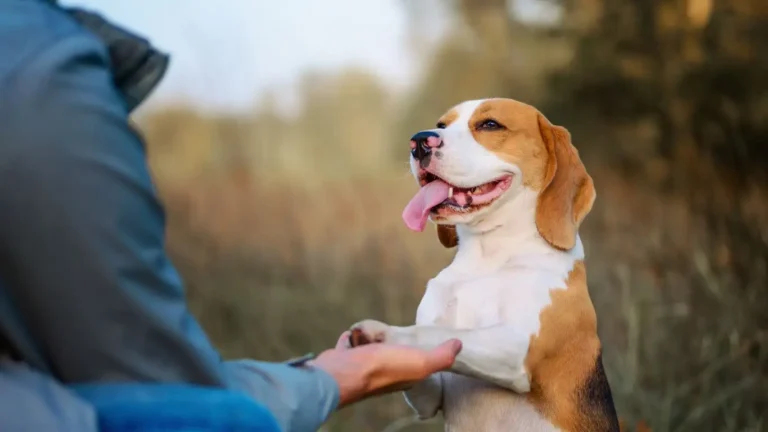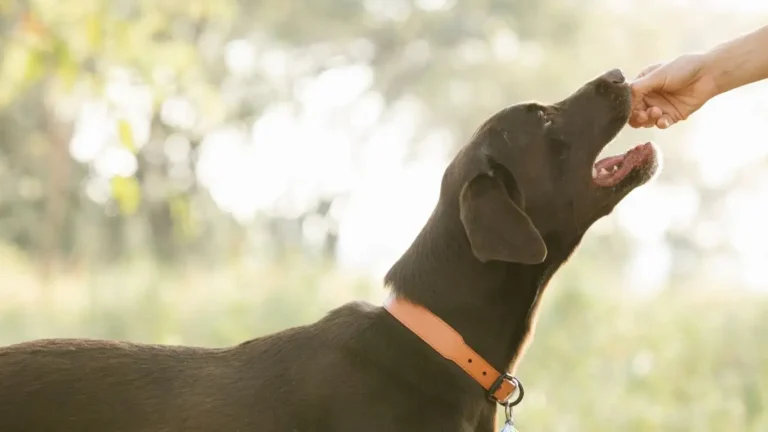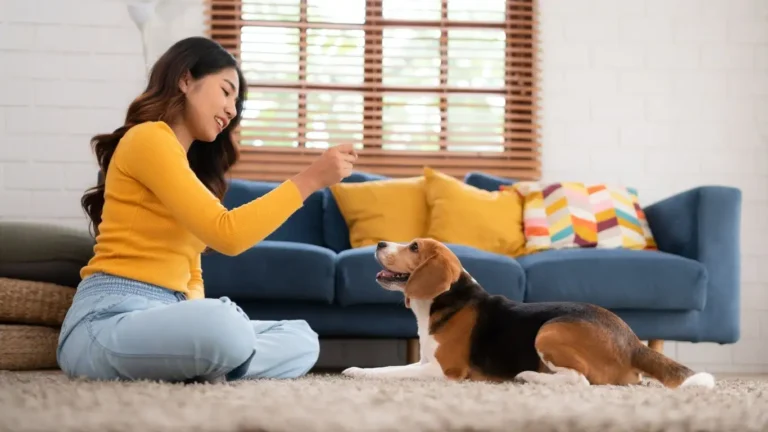How to Train a Dog to Respect Their Owner’s Space for a Calm and Harmonious Home
If you’re a dog owner, you’ve probably noticed at some point that your dog might not always respect your personal space. Whether they follow you everywhere, jump up on the couch, or invade your bed without an invitation, it can feel like they don’t quite understand where their boundaries lie. As a Canine-Assisted Therapy Trainer, I’ve worked with many dogs and their owners, helping them understand that respecting personal space isn’t just about discipline – it’s about building trust and a strong bond.
In this post, we’re going to explore effective strategies for training your dog to respect your space, why it’s important, and how you can create a more harmonious relationship with your furry friend. Let’s dive in!
Why Respecting Space Matters
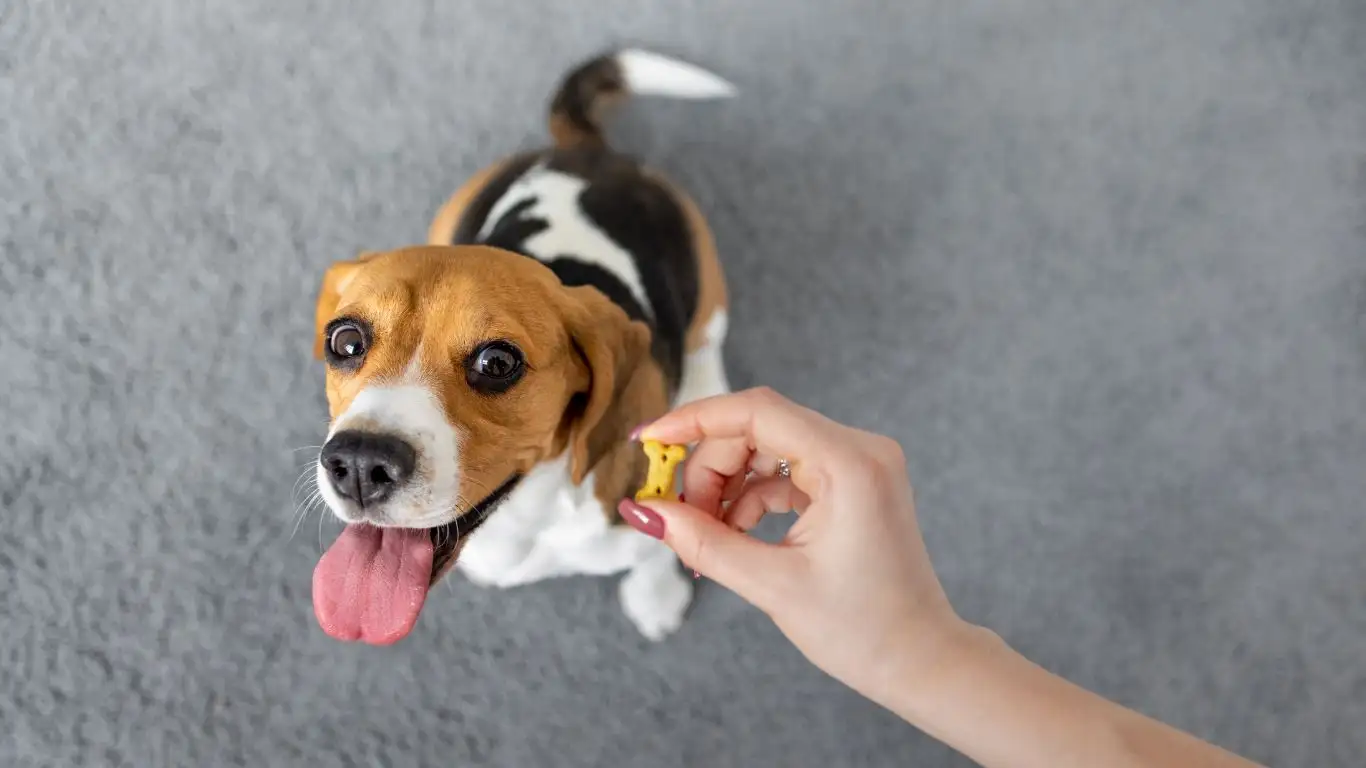
When dogs don’t respect personal space, it can lead to a variety of behavioral issues. Some of these problems might include overexcitement, anxiety, or even aggression. In my experience, the lack of space respect is often a symptom of a deeper communication gap between the dog and their owner. Dogs are intuitive, but they still need clear guidance on what’s expected of them.
As a therapy trainer, I’ve seen firsthand how powerful it is when dogs learn to recognize and respect boundaries. It not only makes everyday life more comfortable, but it also fosters a sense of security in the dog. When a dog understands that certain areas, like the couch or your bed, are off-limits unless invited, it reduces stress and helps them feel more secure in their environment. Dogs thrive on consistency, and setting boundaries is a key part of this. The goal here isn’t to make your dog fearful, but to create a respectful understanding of space that helps everyone feel comfortable.
Common Space Invasion Behaviors
Before we dive into training techniques, it’s important to understand what kinds of behaviors indicate your dog is not respecting your space. Here are some of the most common signs that your dog may be pushing boundaries:
- Following you everywhere: Some dogs have a habit of sticking to their owners like glue. While this can be endearing, it can also be exhausting if they don’t give you the physical space you need.
- Invasion of personal spaces: Whether it’s your bed, couch, or even your lap, some dogs love to claim every inch of your space, regardless of whether you’re there or not.
- Jumping on guests: Not just you, but your guests might get the same treatment! Dogs who don’t respect boundaries might jump up on visitors without hesitation.
- Sniffing or licking excessively: Dogs may invade your personal space by constantly sniffing or licking you, especially when you’re trying to relax.
These behaviors can be frustrating, especially if your dog doesn’t understand why their actions are bothering you. The good news is, with consistent training, you can teach your dog to respect your space and set healthy boundaries.
How to Train a Dog to Respect Their Owner’s Space
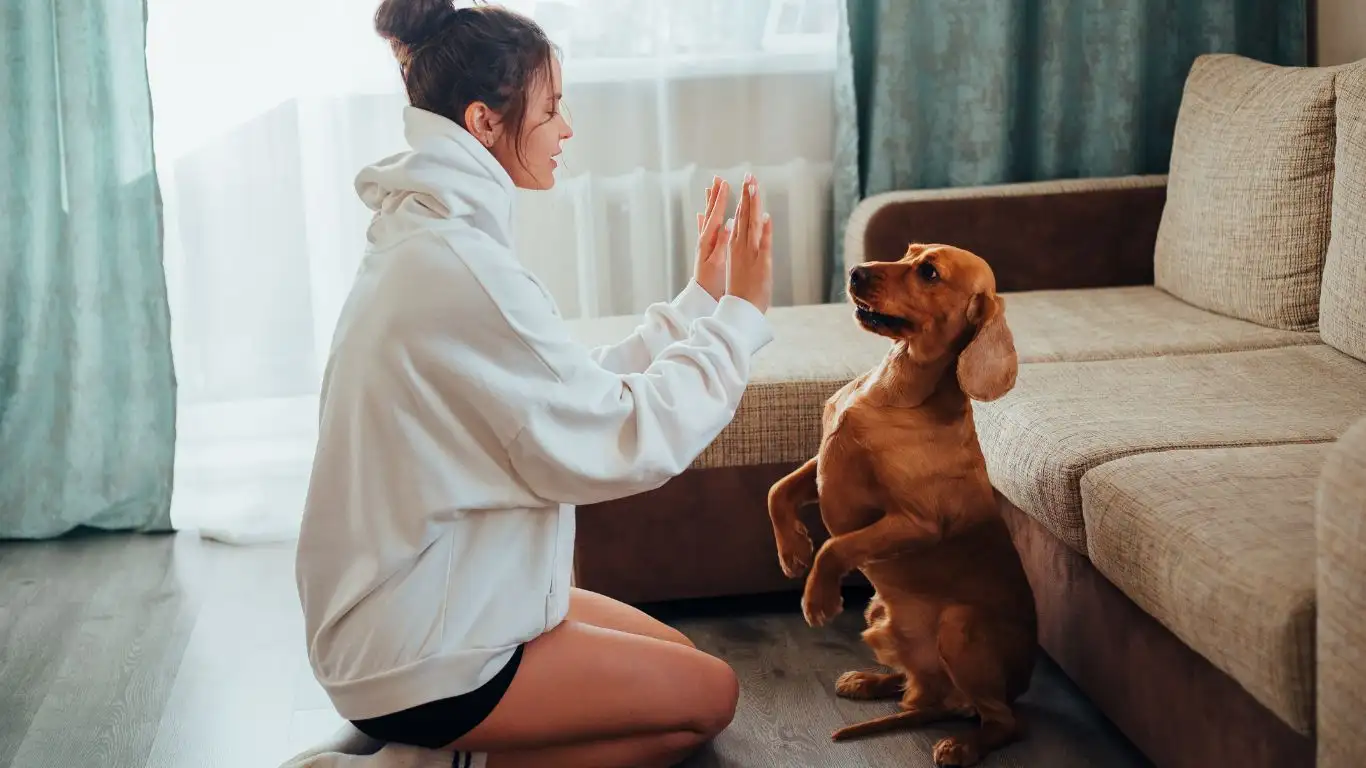
Training your dog to respect your space is a gradual process that requires patience, consistency, and clear communication. Here are some practical steps I recommend based on my experience with canine therapy training:
1. Set Clear Boundaries
The first step is to set clear, consistent boundaries. Dogs are creatures of habit and routine, so they thrive when they know what to expect. For example, if you don’t want your dog jumping on the couch or the bed, you need to make sure this rule is consistent across the board. In my therapy training sessions, I emphasize that boundaries aren’t just physical; they’re behavioral too. Teach your dog where it’s okay for them to be and where it’s not. Start small and gradually expand the area they are allowed in. If your dog tries to enter a space you’ve deemed off-limits, gently guide them away and redirect their attention elsewhere.
2. Reward Good Behavior
Positive reinforcement is key when training dogs. If you want to encourage your dog to respect your personal space, reward them when they stay in their designated area. Use treats, toys, or affection as rewards, but make sure to give them the reward immediately after they exhibit the desired behavior. For example, if your dog stays calmly on their bed while you’re relaxing on the couch, praise them and give them a treat. This positive reinforcement tells your dog that respecting your space results in good things!
3. Use the “Place” Command
One of the most effective techniques I use in therapy training is teaching the “place” command. This is where you designate a spot (usually a bed or mat) for your dog to go to when they need a space of their own. This command can help create clear boundaries. For example, when you sit down to watch TV, you can give your dog the “place” command and encourage them to lie down on their mat. Over time, they’ll begin to associate this specific space with relaxation, helping them understand the importance of respecting your space.
4. Manage Space with Crates or Playpens
Sometimes, especially with puppies or dogs who are still learning, using a crate or playpen can help teach them about space. These tools give your dog a safe and controlled area where they can relax while also keeping them away from places they shouldn’t be. This also provides the dog with their own personal space, which is vital for their mental well-being. Crates aren’t about punishment; they’re about teaching your dog where they can rest without constantly invading your space.
The Role of Consistency and Patience
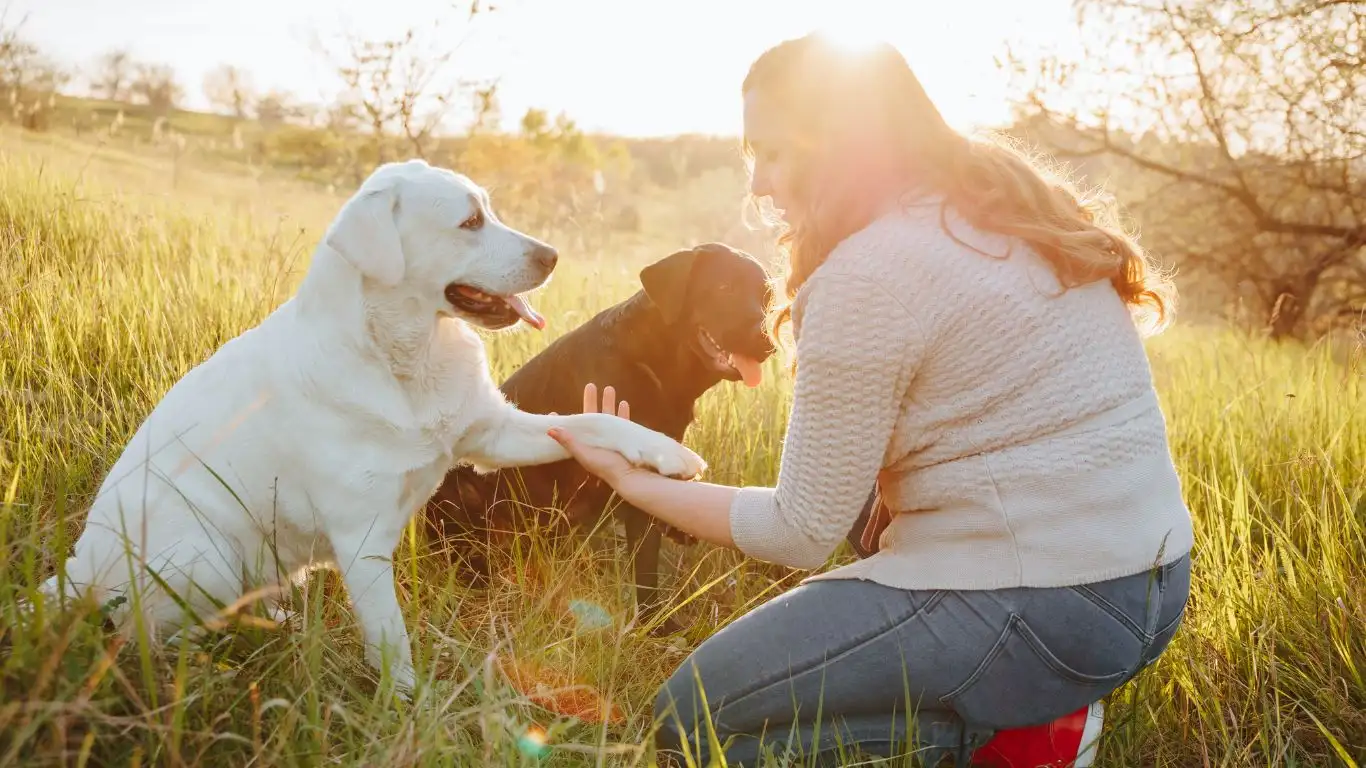
Remember, training your dog to respect your space doesn’t happen overnight. It requires a lot of patience, consistency, and understanding of your dog’s individual needs and behaviors. One of the things I stress to my clients is that this is a journey. There will be setbacks, and that’s okay. The important thing is to stay consistent with your boundaries and always reward the behaviors you want to see more of.
As you work on teaching your dog to respect your space, keep in mind that dogs are incredibly perceptive creatures. They can sense when you’re frustrated or uncertain, so it’s important to approach the training process with calmness and clarity. If you’re unsure, don’t hesitate to seek help from a professional trainer or behaviorist who can guide you through the process.
Reading Your Dog’s Body Language
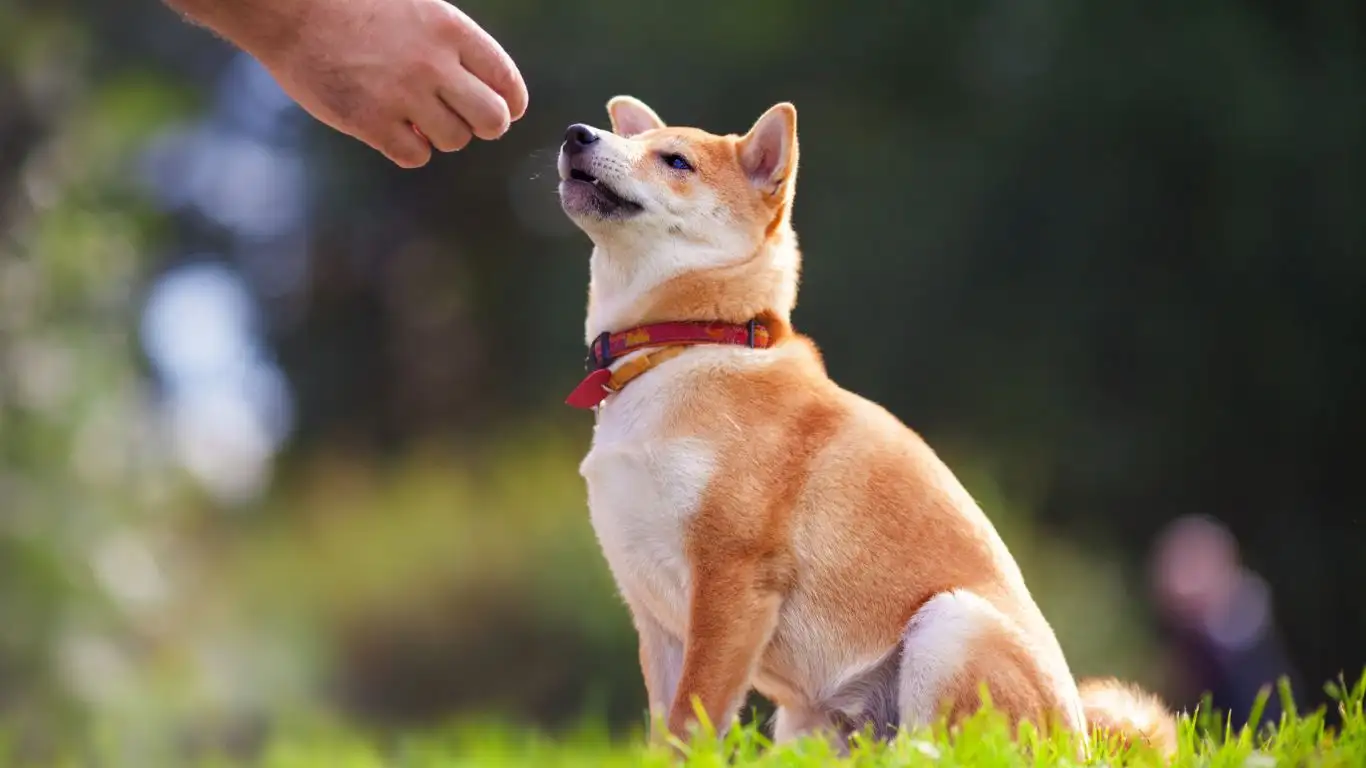
One of the most underrated parts of training a dog to respect your space is learning how to read their body language. Honestly, this is something I picked up more from hands-on experience than any manual or training course. Dogs are incredibly expressive—if you know what to look for. Subtle cues like lip licking, yawning, tail position, and ear movement can all tell you whether your dog is anxious, relaxed, or overstimulated.
For example, if your dog starts pacing or leans into your space when you’re clearly not engaging, they might be feeling insecure or overly attached at that moment. That’s a perfect opportunity to redirect and reinforce space boundaries. You’re not ignoring your dog—you’re teaching them that calm behavior and independence are okay. You’re showing them that it’s *safe* to settle down in their own area, without always being glued to you.
Signs Your Dog Is Respecting Your Space
As training progresses, you’ll start seeing small but meaningful shifts. Here are a few signs that your pup is starting to “get it” when it comes to boundaries:
- They pause at doorways or thresholds before entering a room, waiting for your signal.
- They stay on their bed or mat when guests arrive, instead of charging the door.
- They choose to lie down at a respectful distance instead of constantly climbing into your lap or onto your bed uninvited.
These may seem like little wins, but trust me—they’re huge. Each moment like this builds your dog’s confidence and strengthens your bond. It’s about mutual respect, not just control.
How to Stay Consistent With Boundaries

Consistency is hands-down the biggest game-changer. I’ve worked with dogs that had all the right commands and cues down—but the moment the rules changed day-to-day, so did their behavior. It’s kind of like giving mixed signals in a relationship: super confusing and frustrating for both sides.
Here’s what I tell my clients (and honestly, I have to remind myself of this with my own dogs):
- Stick to your boundaries: If the couch is off-limits today, it’s off-limits tomorrow too. If you make exceptions, make them intentional and clear.
- Get everyone on the same page: This is a big one. If you live with family or roommates, make sure they understand and follow the same training rules. Mixed messages just delay progress.
- Practice daily: Even five to ten minutes a day of reinforcing space boundaries can make a world of difference. Make it part of your routine.
In one of my early therapy placements, I worked with a rescue who had a history of separation anxiety and no sense of boundaries. It took weeks of patient, consistent practice using the “place” command and structured personal space exercises—but once we got there, the transformation was amazing. She became calmer, more confident, and much more attuned to her handler’s space.
Handling Pushy or Overexcited Behavior
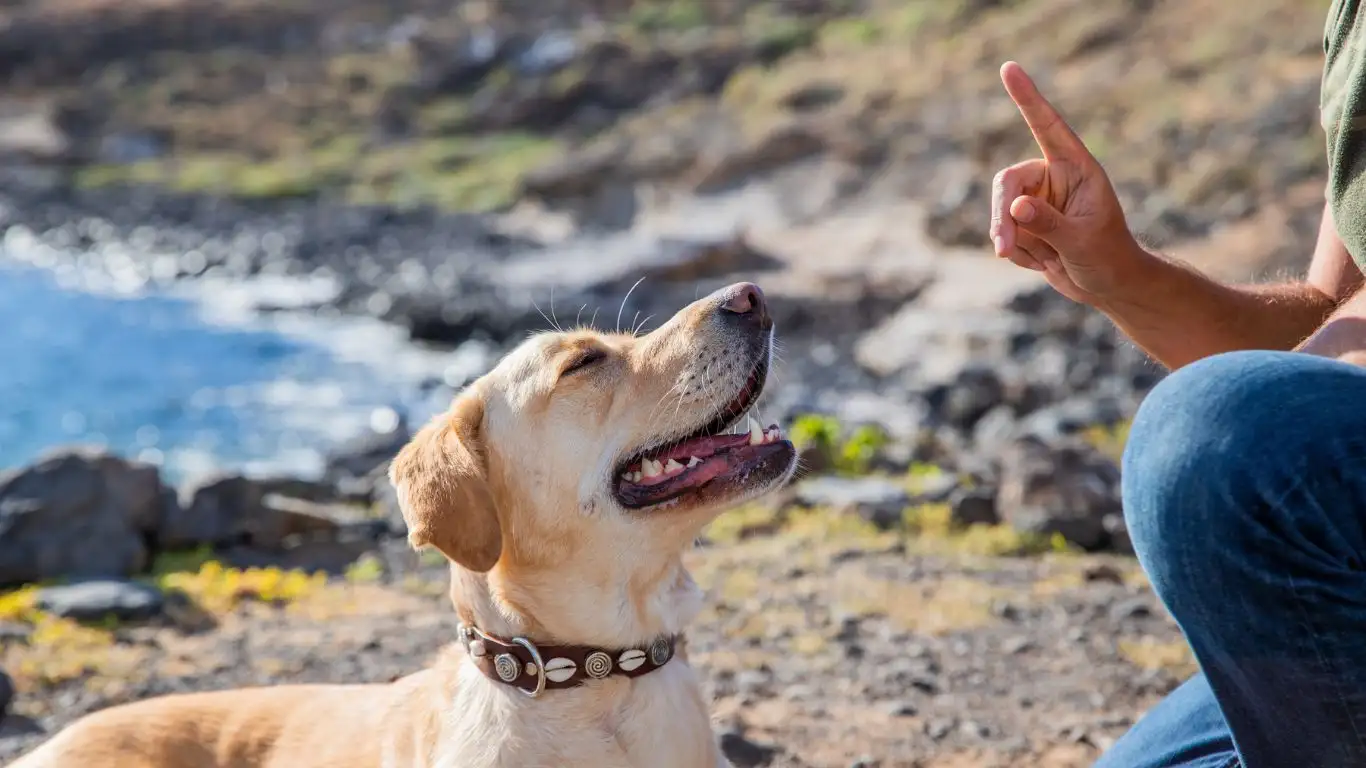
Okay, let’s talk about pushy behavior—because not every dog is going to calmly sit in their place the first time you ask. Some dogs (especially young ones or super-social breeds) will challenge the rules. They’ll jump up, bark, nudge, or even whine when they feel left out or want your attention.
The key here isn’t to scold or punish. It’s to redirect that energy into something productive and calm. For instance:
- Ignore the behavior when it’s attention-seeking, and only reward calm responses. Your attention is valuable—don’t give it away for chaos.
- Give them a job: Ask for a sit, a down, or a “place” command. It helps reset their brain and gives them a clear task to focus on.
- Use a leash inside during training stages if needed. Sometimes, having that extra control tool can keep things from escalating and help guide them to their space gently.
I had this one golden retriever client (sweet as pie, but a total space invader). She would plant herself right on top of your feet and lean her full 70 pounds into you like she was made of cement. What worked with her was combining calm redirection with a comfy “place” setup—complete with a blanket and a chew toy she loved. Over time, she started choosing her bed voluntarily. That’s the goal: *voluntary respect*, not forced distance.
Enriching Their Environment Away From You
Here’s something a lot of people overlook: if your dog has nothing else to do, of course they’re going to be all up in your space. Enrichment is crucial for independence. Give them things to focus on that don’t involve you directly.
Simple Enrichment Ideas:
- Kong toys or puzzle feeders – Fill them with treats or peanut butter and let your dog problem-solve.
- Snuffle mats – These are great for tapping into their natural foraging instincts.
- Long-lasting chews – Like bully sticks or dental chews (always supervised, of course).
- Scavenger hunts – Hide treats around their designated area and encourage them to sniff them out.
By creating an environment where your dog can stay mentally engaged on their own, you’re also reinforcing the idea that your physical space isn’t their only source of interest or comfort. It’s a win-win.
Knowing When to Ask for Help
Let’s be real—training isn’t always sunshine and belly rubs. Sometimes, despite your best efforts, your dog may continue to struggle with space boundaries. And that’s okay. There’s no shame in asking for help.
If you’re dealing with intense attachment behaviors, aggression around boundaries, or ongoing anxiety when you create distance, it might be time to bring in a professional trainer or behaviorist. I’ve had clients come to me after months of frustration, only to find that just a few sessions together helped turn things around completely.
Working with a pro brings fresh eyes, customized strategies, and a whole lot of peace of mind. And sometimes, that’s exactly what both you *and* your dog need to move forward.
Building a Respectful Routine That Lasts
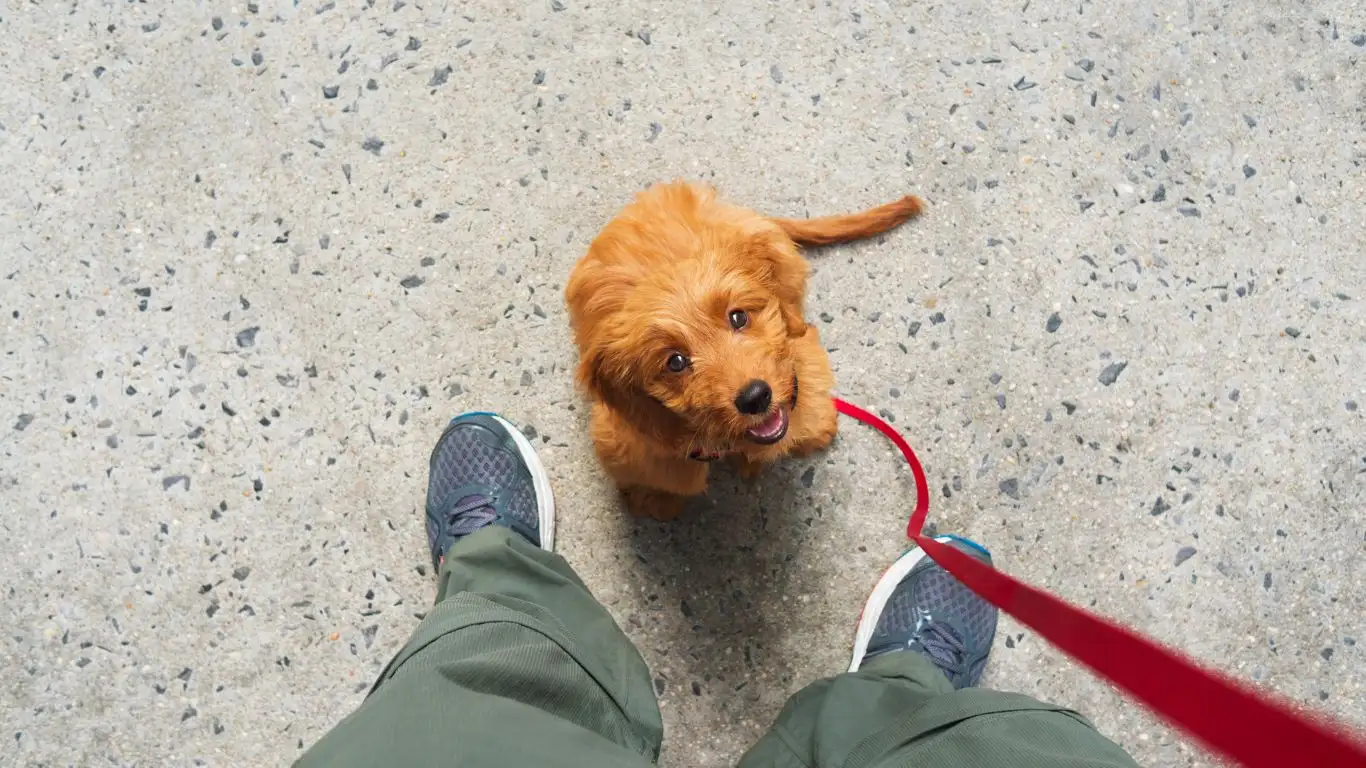
By the time you’ve made it to this stage, you’re probably starting to notice some major improvements—and let me just say, that’s huge. But now comes the part that tends to trip people up: *maintaining* those changes long-term. I’ve seen plenty of dog owners get through the first few weeks like champs, only to slowly let things slide until the old habits creep back in.
So let’s talk about how to keep your dog’s respect for your space going strong, without making it feel like a full-time job.
Anchor Your Training Into Daily Life
You don’t need to block out an hour every day to “train.” What actually works best is folding it into your regular routine. Here’s how I personally do it with my own dogs, and what I recommend to clients:
- Morning calm time: Before feeding or walking, ask for a sit or “place” for a few minutes. It sets the tone for the day.
- During meals: Teach your dog to respect space by having them wait at a designated spot while you eat. No begging allowed.
- TV time = “Place” time: Instead of letting your dog jump on the couch automatically, have them lie on their bed across the room unless you invite them up.
- Guest greetings: Reinforce polite behavior and space boundaries by having your dog sit and stay until released to say hello.
These everyday moments are golden opportunities to reinforce everything your dog’s learned about giving you space. The more you do it, the more second nature it becomes—for both of you.
When Space Training Translates to Other Areas

Here’s something really cool: once your dog starts understanding personal space in your home, it often starts showing up in other areas too. I’ve had so many therapy clients tell me things like, “He doesn’t bolt through the door anymore,” or “She’s not as clingy when we visit friends.” That’s because dogs thrive with clarity and structure. When they learn one respectful behavior, it tends to ripple into other parts of their life.
For example, I had a client whose dog used to jump in the front seat every time she got in the car. After a couple of weeks of space training in the house, he started waiting at the back door for her to invite him in. That’s not just training—that’s trust, built from clear communication and boundaries.
Respecting Your Space = Building Emotional Stability
Let’s go deeper for a second. This isn’t just about making life easier. Teaching your dog to respect your space can actually help with emotional regulation—for both of you. Dogs who know how to settle on their own are less anxious, less reactive, and more confident. And when your dog is calm and respectful, it reduces your stress, too. You get to enjoy a peaceful home instead of constantly managing chaos.
There’s even research to back this up—dogs with clear structure and predictable routines show fewer behavioral problems over time. And as someone who’s worked in therapy settings with reactive and emotionally sensitive dogs, I’ve seen firsthand how impactful this kind of training is for their overall well-being.
Respect Isn’t One-Sided
Now, let me be real with you for a minute. As much as we want our dogs to respect our space, we’ve got to return the favor. That means being mindful of their body language, their signals, and their boundaries, too. It means giving them their own space when they need it, like a cozy crate or quiet corner where they can retreat and decompress.
If your dog walks away, let them. If they don’t want to be cuddled in a certain moment, don’t force it. Mutual respect goes a long way in deepening your bond. And when they trust that you honor their needs, they’re far more likely to respect yours.
Here’s a little truth I’ve learned through years of training:
Dogs mirror our energy. If we’re calm, clear, and consistent—they will be too. If we’re chaotic, unsure, or all over the place, they’ll act accordingly. Training a dog to respect your space isn’t just a skill—it’s a reflection of your relationship. And the best relationships, canine or human, are rooted in balance and respect.
Helpful Resources & Reading
Want to dig deeper into canine behavior and respectful training practices? Here are some of the sources I regularly lean on, both for myself and when guiding clients:
- American Kennel Club (AKC) – Solid training advice and breed-specific insights
- PetMD – Covers health, behavior, and wellness for dogs of all ages
- NIH – Research-backed insights on the human-animal bond
- Health.com – Wellness info for pet parents (and their stress levels!)
I’m always exploring new science, books, and behavior journals—but those four are rock solid places to start if you’re diving deeper into the psychology behind space training and dog-human dynamics.
Disclaimer
This article is based on my personal experience as a Canine-Assisted Therapy Trainer and is intended for informational purposes only. It should not be considered veterinary advice or a substitute for professional dog behavior consultation. Always consult a certified dog trainer or veterinarian for concerns specific to your dog’s health, behavior, or training needs.



